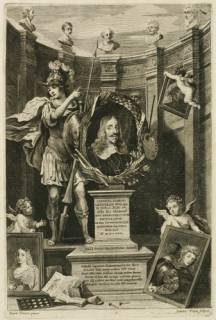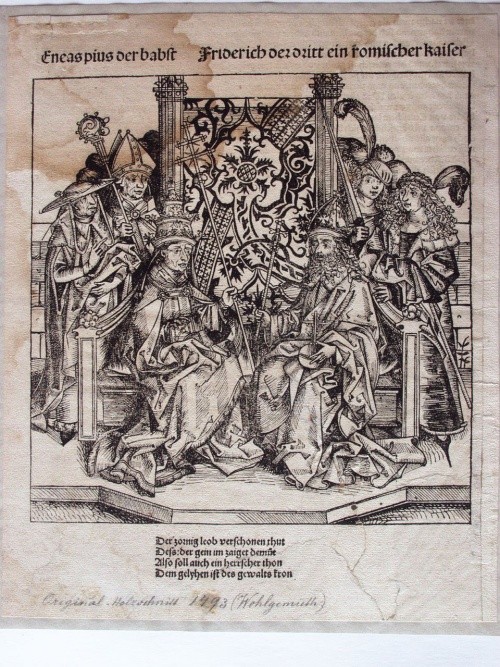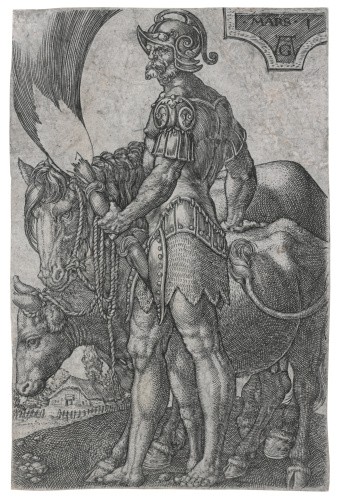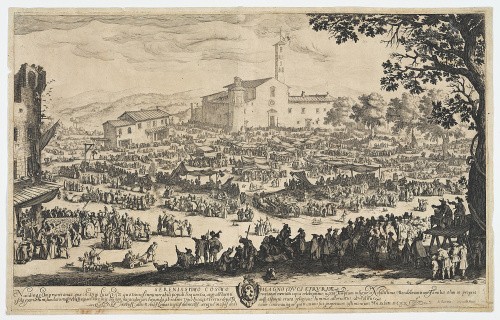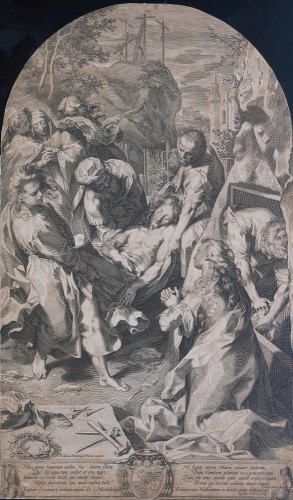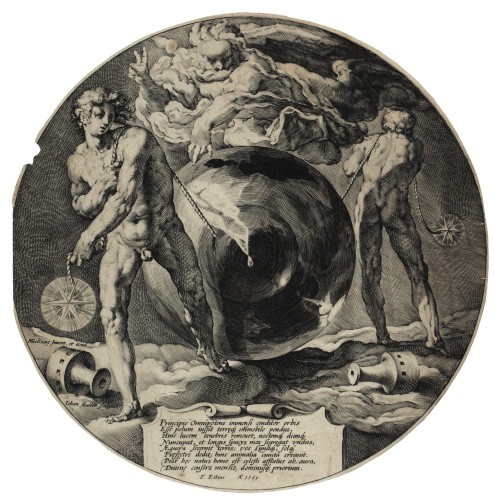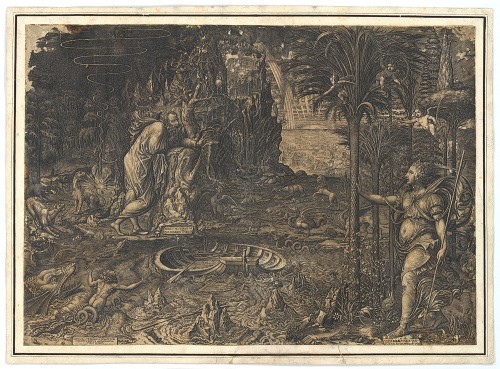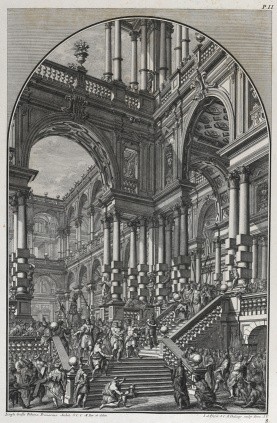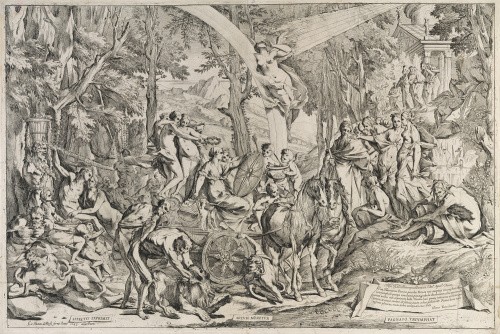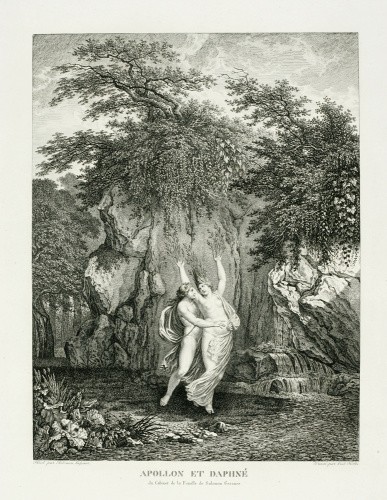Testa, Pietro
Pietro Testa (1612 Lucca – 1650 Rome)
The Triumph of Painting at the Parnassos, about 1642, 1648 (print)
etching, paper; 473×718, 484×729 mm, Olomouc Archbishopric – Archdiocesan Museum in Kroměříž, inv. no. G 8506
The etching was created in about 1642 by Pietro Testa, Italian painter, drawer and graphic artist, who dedicated it to his friend, sponsor and patron Girolamo Bounvisi, the Bishop of Lucca. The Kroměříž print is the second edition of the print issued by publisher and printer Giovanni Giacomo de Rossi in 1648. In the attached Latin dedication to Buonvisi, Testa says that Painting triumphs here under his auspices. The figure of Painting is placed in the centre of the composition as a woman riding an ancient chariot. She is crowned with a laurel wreath received from the hands of the three Graces. As the sign of her victory, an arch of triumph (ARCVM MERETVR) expands above the scene in the form of a rainbow, on top of which the goddess Iris is hovering, protecting her eyes against the blinding sunshine coming from the Parnassos. This concept is in accord with Testas belief that colour in the painting is due to the effect of the light. The colours of the rainbow are being mixed by little amorettos and Painting contemplates the glowing change in the colours of the star she is painting on the shield, this is a reference to Buonvisis sponsorship. Painting is assisted by a young man with a quill in his hand who helps her hold the shield, which probably represents Poetry or History, which is to ensure undying glory to Buonvisi. The triumph of Painting, however, also consists in the harmonic unity of the colours and chiaroscuro represented by a pair of dappled horses pulling the chariot. When coming to the Parnassos, Painting leaves behind the garden of earthly delights inhabited by various passions (AFECTVS EXPRIMIT). Painting is thus understood as virtue triumphing over vice, its triumph leading to her advance to the Parnassos (PARNASO TRIVMPHAT), a mountain range dedicated to Apollo, the Muses and Dionysos. On the right, the spring of Hippocréné flows from the rock of Mount Helicon under the hooves of Pegasus - the symbol of glory and poetic talent - giving inspiration to poets. Apollos swans are swimming on the lake and his spring is being poured by Acheloos, the god of the rivers. Painting comes to the Parnassos and is greeted by nine Muses below Mount Helicon, with Calliope the muse of epic poetry at the head, with a book under her arm. At the top of the Parnassos, in front of the temple of immortal Fama, awaiting the coming of Painting, are the ancient poets. The balanced multi-figural composition built in several segments emphasized by the effects of light makes this one of Testas peak graphic works. In the collections of Städelsches Kunstinstitut in Frankfurt, a preparatory drawing for the etching is preserved.
Helena Zápalková



